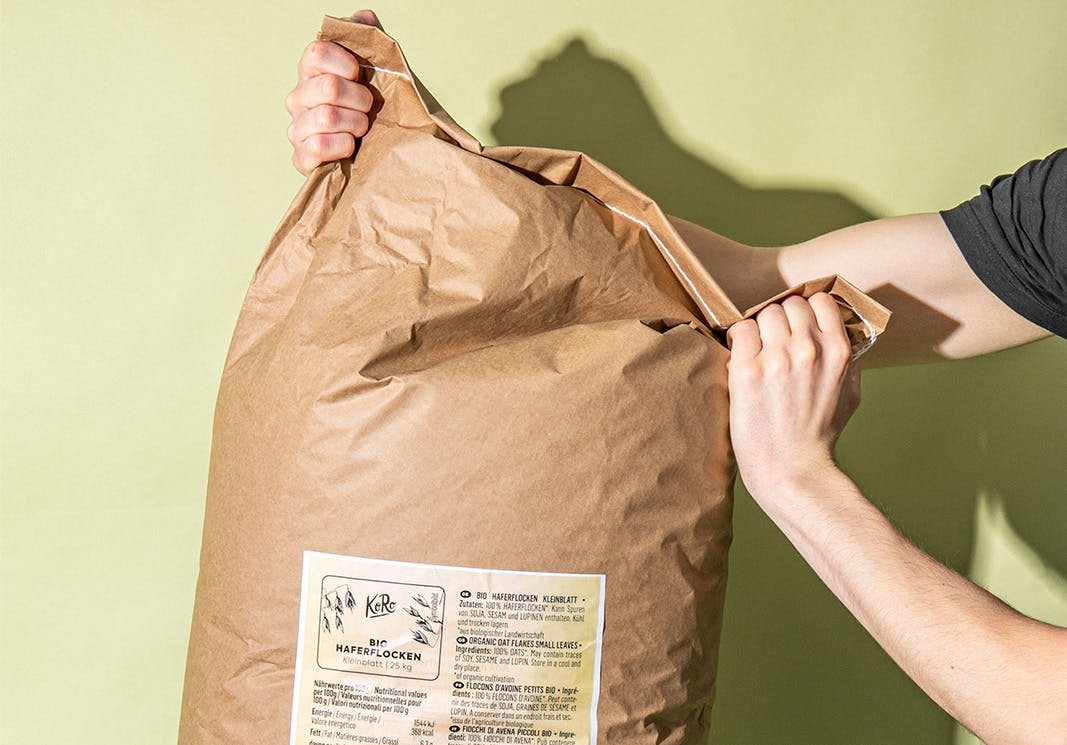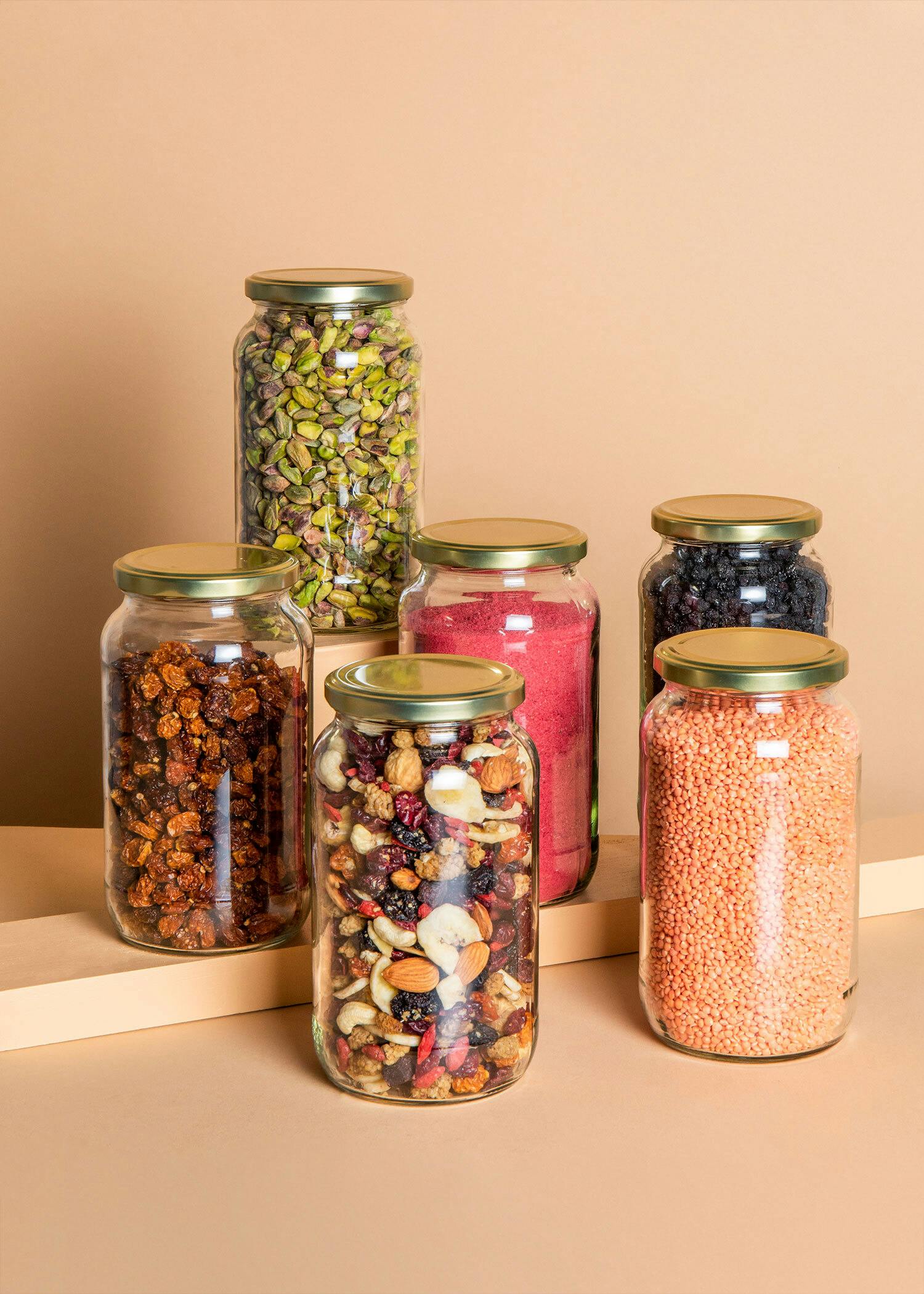
Nowadays, it is impossible to imagine a household without plastic products. Chairs, smartphones, pens - everything is made to some extent from this cheap and easy-to-process raw material. Here at KoRo, we want to play our part in the sustainable use of resources. That's why we've thought about how we package our products.
You have probably already seen that we sell the majority of our products in transparent plastic films and bags. At first glance, these are not particularly environmentally friendly and have often been a point of criticism from many customers in the past. In the following, we will take a closer look at how we came to the decision to use plastic packaging and why we are sticking with it - for the time being.
What is plastic?
Plastic is a collective term for a variety of different polymers. Polymers are chemical substances that - as the name suggests - consist of many (poly-), repeating (-mer) units, usually hydrocarbons. Although polymers are found in nature in materials such as silk, wool or wood, most people think of the artificial polymers used in everyday life: plastics. These are produced almost exclusively from fossil raw materials such as crude oil and gas. In this process, crude oil is broken down into its components in complex procedures. These hydrocarbons can be combined through chemical processes to produce the polymers we know as plastics. And we can no longer imagine our everyday lives without them.
Environmental pollution caused by plastic
Plastics are robust and durable. We mainly use them for things that we only use for minutes - sometimes even seconds. Contradictory, isn't it, that this longevity falls on our feet? Improperly disposed of plastic items can last for decades or even centuries without being damaged. The result is an earth that is drowning in waste.
Is recycling the solution?
Everyone knows the yellow garbage can on the doorstep. We are all called upon to separate our waste properly. Plastic belongs in the yellow garbage can! But aluminum and tinplate are also disposed of in this way. According to the Federal Environment Agency, around 99% of plastic that ends up in the garbage can is recycled. Unfortunately, not everything is as rosy as it seems. After all, not all recycling is the same: only 33% of plastic waste from private households can be used for materials and raw materials, i.e. it is used for the production of construction products and packaging. The rest is recycled "energetically". And that sounds better than it is, because what can be recycled here is the chemically stored energy produced by burning CO2 to H2O. And this in turn is used to generate electricity and heat. A very small proportion of the plastic that is thrown away is landfilled or incinerated in plants that do not continue to use the energy released in the process - so much for how we actually think of recycling.1
How does the recycling debacle come about?
Separating and sorting the various types of waste is very time-consuming and in some cases not even feasible. A lot of packaging consists of compounds or certain combinations of materials. A well-known example of this is the frequently used beverage carton (Tetrapak), which combines paper, aluminum and polyethylene to form a so-called "composite material". Huge recycling machines are required to separate individual components after use. And these are expensive - only a few municipalities have the necessary funds to afford such a plant. In the end, only 36% of Tetrapaks are actually recycled2; and as we mentioned above, the majority of plastic waste is disposed of as energy, i.e. incinerated, even though much of the plastic packaging could be reused.
Bulk packaging at KoRo
How do we solve the plastic recycling debate at KoRo? Our overriding guiding principle for use is: avoid before recycle before dispose. As our aim in avoiding plastic is to reduce the new production of smaller individual packaging, we have considered that the solution could lie in bulk packaging. Compared to packaging from conventional retailers, our approach means we need fewer materials. This can also be seen, for example, in the Doypacks, the bags, which save around 40% in material compared to conventional small packaging.
Why do we use plastic packaging at KoRo?
Not everything that is paper is shiny. Even if you find it hard to believe, sometimes the frowned upon plastic packaging can be the more environmentally friendly packaging choice. We at KoRo have given this a lot of thought and want to show you why we have opted for plastic packaging for many of our products. Here are eight reasons for plastic packaging at KoRo:
- Because food can be hygienically packaged with plastic while protecting it from germs or other influences such as moisture.
- Because plastic packaging extends the shelf life of food due to its high protective effect and can indirectly reduce food waste.
- Because bulk packaging results in less packaging waste per product - along the entire logistics chain.
- Because plastic packaging such as KoRo's Doypacks can be recycled better than composite packaging made of paper and aluminum, for example.
- Because our producers can choose their own type of packaging and thus reduce it to a minimum. This saves resources such as ink, paper and glue.
- Because plastic packaging has a very low weight and can indirectly contribute to saving CO2.
- Because paper packaging often does not offer sufficient protection and limits shelf life. The inside of composite packaging is often coated with other materials such as aluminum or plastic, which makes recycling more difficult.
- Because glass not only causes more CO2 during transportation due to its weight, but is also more likely to break. It is therefore additionally packaged with paper and plastic during shipping.

As you can see, we have given a lot of thought to the topic of packaging and materials. Issues like these are challenging and necessary. We are constantly working on developing new, creative and innovative approaches and are happy to be able to make a small contribution to a more sustainable food industry.
If you would like to learn more about packaging, why not listen to our KoRo podcast ? There we discuss all the myths and facts about packaging at KoRo.